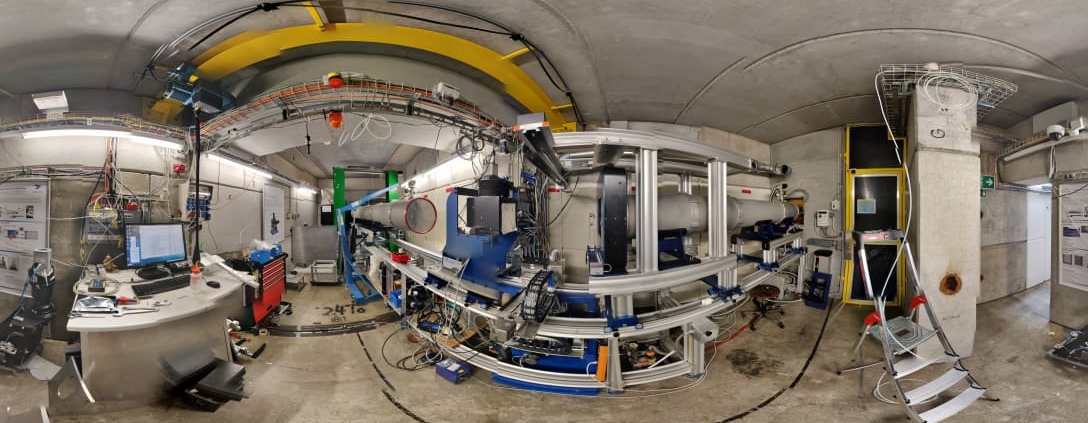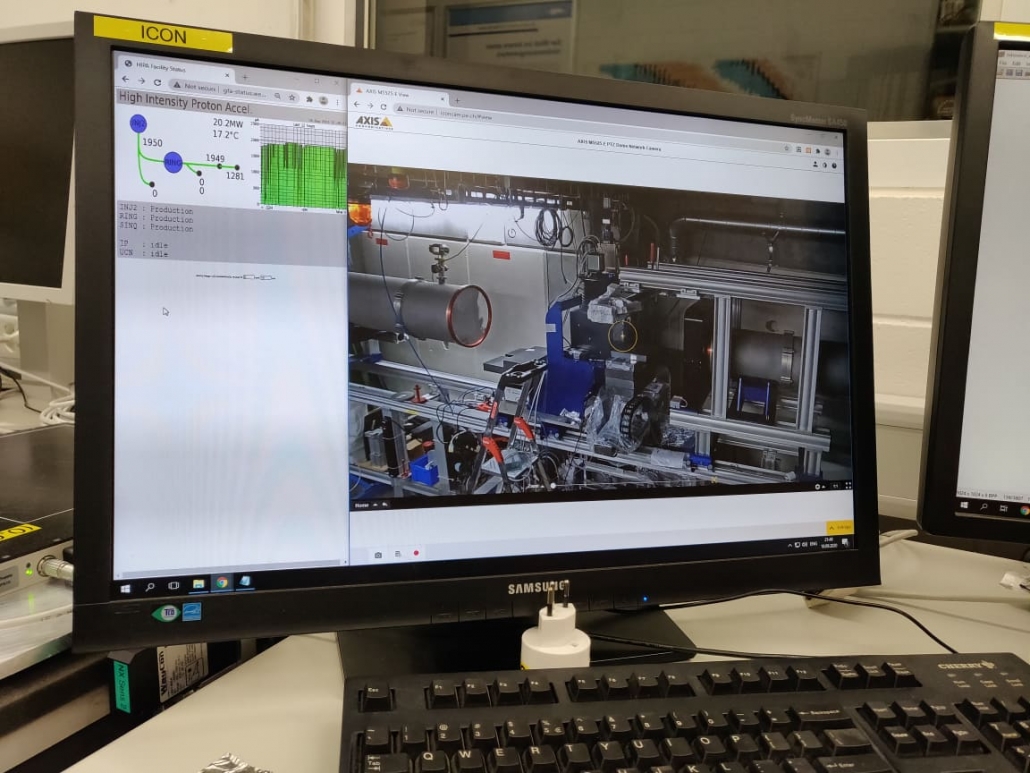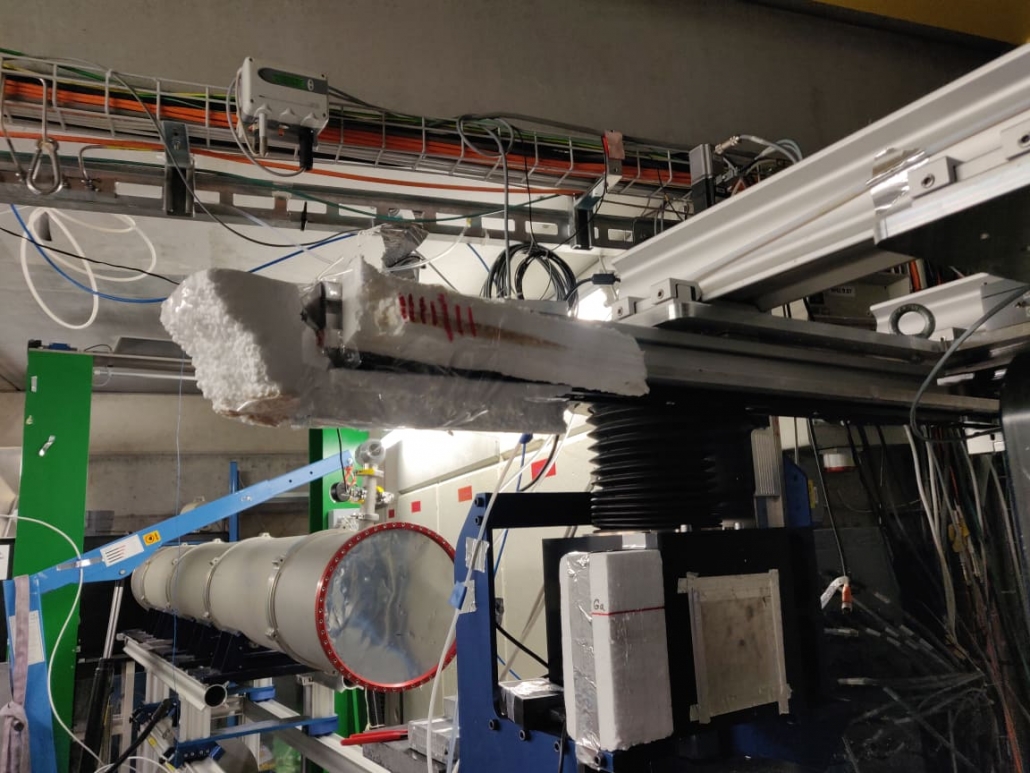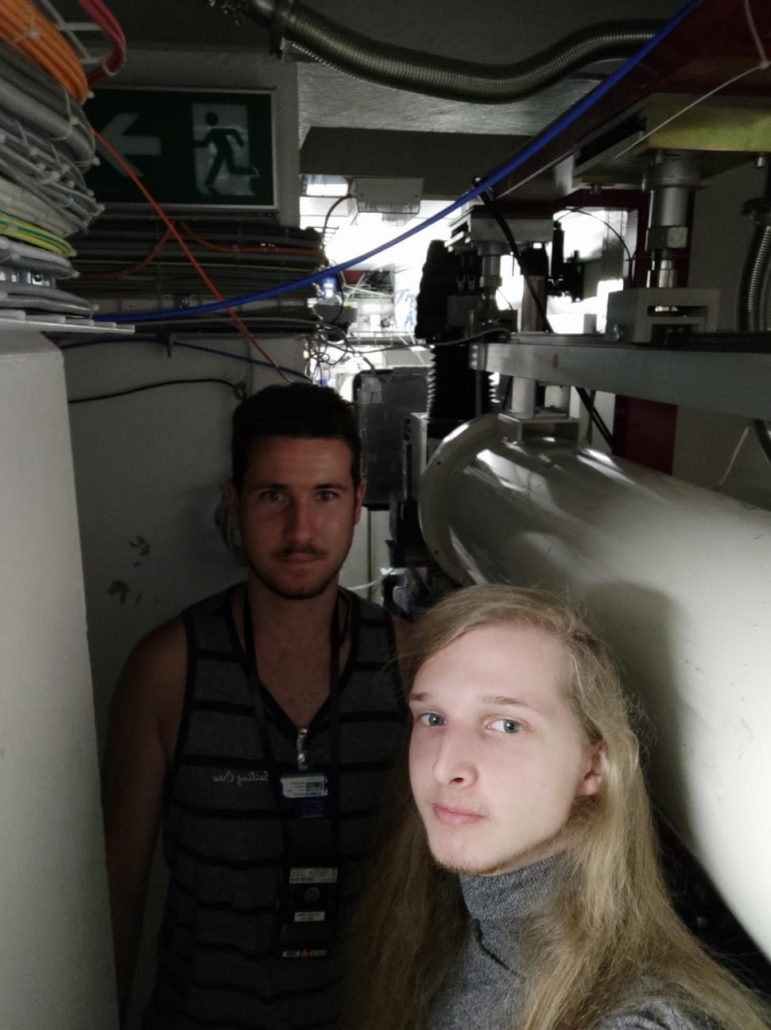INM researchers have successfully completed the series of experiments at the Paul Scherrer Institute
The series of neutron radiography experiments at the Paul Scherrer Institute (PSI) were successfully completed at the beginning of October. Scientists from the Institute of Numerical Modelling (INM) – Mihails Birjukovs, Jevgēņijs Teličko, Pēteris Zvejnieks and Mārtiņš Klevs – observed magnetohydrodynamic (MHD) bubble flow in a liquid gallium model system for different gas flow rates and magnetic field orientations and flux values.
Experimental validation was carried out for the previously developed data and image processing tools. During Mihails Birjukovs’ two-month visit to PSI, an original method for improving the resolution of phase boundaries within flow was developed, and a significant portion of the obtained experimental data was processed – the results will be demonstrated in upcoming publications. Several research articles are going to be written about the object identification and tracking algorithm implemented by Pēteris Zvejnieks and regarding the research by Mārtiņš Klevs on the spectral analysis of bubble flow.
The Institute of Numerical Modelling is especially grateful to Liene Bandeniece for helping our researchers out with logistical challenges and roadblocks – had these not been solved as quickly, the experiment would not have been possible. We would also like to thank Imants Bucenieks from the Institute of Physics for the assembled magnetic field systems (now shipped to Germany for upcoming experiments). And, of course, we wish to acknowledge our colleagues – Pavel Trtik (PSI), Knud Thomsen (PSI), Tobias Lappan (HZDR), and research partners, Paul Scherrer Institut (PSI) and Helmholtz-Zentrum Dresden-Rossendorf (HZDR), for their financial and technical support that ensured the success of the experiments.
The data obtained during the experiments will yield a fundamental understanding of MHD bubble flow physics and together with simulations – prospects for determining a set of characteristic flow parameters and correlations that could be used for more effective control of several metallurgical processes and will pave the way to the research of more complex systems.








